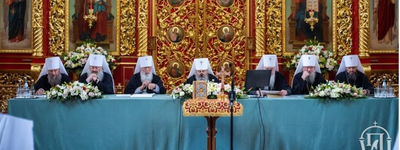Are More Religions Better?
Orthodox competition has increased throughout Ukraine since 2000. But has religiosity increased?
In an essay in the Kennan Institute’s Focus Ukraine (“Religious Regulations and Orthodox Competition in Ukraine,” 16 February 2018), Tymofii Brik uses the familiar market approach to argue that competition among a multiplicity of churches is healthy for Ukraine’s religious life. The supply-side theory he invokes holds that religious “consumers” are more likely to choose the churches’ “products” if they are given a broader choice. Choice is enhanced when the government allows free competition, abstaining from interference or excessive regulation.
Accordingly, Brik suggests that President Poroshenko’s support of a single Orthodox Church that would unify Ukraine’s three competing ones (the Ukrainian Orthodox Churches of the Moscow and Kyiv Patriarchates and the Ukrainian Autocephalous Orthodox Church) might actually weaken Ukrainian religious life. He also cites recent moves to discriminate against churches based in “aggressor states” – an obvious reference to the Russian Orthodox Church. Brik points out that religious activity is strongest in the west-central portion of the country, where competition among Orthodox churches is most intense.
Various objections can be raised to Brik’s approach. For one thing, some would point out that religion should not be seen in economic terms: it is not a mere “product” for mass “consumption.” Unlike economic organizations, rival Orthodox churches tend to regard each other as schismatic and illegitimate, not merely inferior. There is nothing in economic life to correspond to the mandate of a single Church of Christ. Moreover, the existence of many religious claims tends to relativize the very idea of religious truth, so that in the end, people lose interest in religion altogether.
In response, advocates of the supply-side approach point out examples where a monolithic religious presence has led to decline – notably, the Northern European Protestant countries, where state churches have suffered diminishing adherence, as well as formerly Catholic France and increasingly secular Italy and Ireland. Particularly striking is the example of Russia, where despite state support and protective regulation, the Orthodox Church has been unable to mobilize more than a few percent of the population to undertake even basic religious practices like regular church attendance. As a contrast, supply-siders appeal to the example of the United States, where a multiplicity of religious groups has been accompanied by high religiosity overall.
But their opponents argue that the United States – where the supply-side theory originated – is exceptional. Moreover, some maintain that American religiosity is superficial, citing evidence that the actual conduct of Americans is not strongly influenced by religious considerations. They may also cite examples of countries like Great Britain, where a multiplicity of free churches has not stemmed the steep decline of religious affiliation and practice. On the other hand, a religiously monolithic country like Catholic Poland has remained highly religious despite secularist influences.
Citing statistical data, Brik points out that Orthodox competition has increased throughout Ukraine since 2000. But has religiosity increased? It appears that in fact, the post-Soviet religious revival is levelling off.
As Brik acknowledges, other factors than competition may affect the level of religiosity. Among them, one might suggest the plausibility and coherence of religious claims, the consistency of churchmen’s conduct with their professed principles, and the adherence of influential elites to religious organizations. If we were to translate this into economic terms, we would say that consumer purchases are influenced by the quality of the product, the behavior of its salesmen, and its popularity among respected figures. These factors, more than the number of competing products on the market, will determine whether we buy the given product. Thus, regardless of the number of churches in Ukraine, people will join a church primarily because they understand and accept its beliefs, because they see its hierarchs and clergy living truly Christian lives, and because they know that popular cultural, political, business or other figures have done so. Churches take note!
Thus, while supply-side economic analysis presents a plausible argument for church diversity, other factors suggest that a nation’s level of religiosity depends on neither unity nor diversity, but on more profound considerations.










